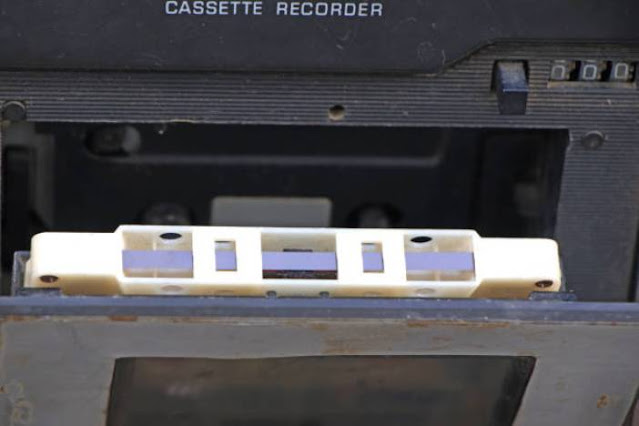- Get link
- X
- Other Apps

The most effective method to Introduce a Second Hard Drive
in Your PC
Presentation
Extending your PC's stockpiling limit is a typical
requirement for some clients, whether you're a gamer, an inventive expert, or
essentially somebody who produces a great deal of information. Introducing a
second hard drive can be a compelling and cost-proficient method for addressing
this need. In this article, we will direct you through the bit by bit course of
introducing a second hard crash into your PC, whether it's a work area or a PC.
Before you start:
Before you jump into the establishment cycle, ensure you
have the accompanying things prepared:
A viable hard drive: Guarantee you have a second hard drive
that is viable with your PC. Check for similarity concerning actual size (2.5
inches or 3.5 creeps for HDDs, M.2 or SATA for SSDs) and connector type (SATA
or NVMe for SSDs).
SATA link: You might require an extra SATA information link
if your motherboard doesn't accompany additional ports. Most hard drives
incorporate a SATA link in the bundling.
SATA power link: Guarantee your power supply unit (PSU) has
enough SATA power connectors to help the new hard drive.
Screwdriver: A Phillips-head screwdriver is ordinarily
expected for getting the hard drive inside the case.
Mounting equipment: On the off chance that your PC case
doesn't have an assigned space briefly hard drive, you could require a mounting
section or caddy to get it.
Reinforcement: It's consistently a decent practice to back
up your significant information prior to making any equipment changes, in the
event something turns out badly during the establishment cycle.
Presently, we should begin with the establishment
interaction:
Stage 1: Power Off and Turn off Your PC
Before you start, shut down your PC and detach it from the
power source. Wellbeing first!
Stage 2: Open Your PC Case
On the off chance that you're introducing a second hard
drive in a PC, you'll have to open the PC case. The cycle might differ relying
upon your case model, however most cases have screws or locks that hold the
side board set up. Eliminate the side board to get close enough to the
internals.
Stage 3: Find an Accessible Drive Inlet
Check your PC case for accessible drive inlets. These are
the spaces intended to hold extra hard drives. They are regularly 3.5-inch or
2.5-inch inlets, contingent upon the size of your hard drive. A few cases might
have assigned mounting spots, while others might expect you to utilize mounting
sections or caddies.
Stage 4: Mount the Hard Drive
Assuming that your PC case has assigned mounting spots for
the second hard drive, just slide it into place and secure it utilizing screws.
Ensure safely secured to forestall any development could harm the drive. On the
off chance that your case doesn't have these spaces, utilize the mounting
equipment to get the hard drive in an accessible cove.
Stage 5: Interface SATA Information and Power Links
Then, find the SATA information and power connectors on the
motherboard and power supply unit. Associate one finish of the SATA information
link to the motherboard's SATA port and the opposite finish to the hard drive.
Interface the SATA power link from the power supply unit to the hard drive.
Ensure these associations are secure.
Stage 6: Boot Up Your PC
With the second hard drive genuinely introduced and
associated, you can now control up your PC. It ought to perceive the new drive
naturally, and you could get a notice from your working framework showing the
presence of new equipment.
Stage 7: Introduce and Design the Drive (Windows)
On Windows, you should introduce and arrange the new hard
drive. This is the way to make it happen:
Open Circle The executives: Right-click on the Beginning
button and select "Plate The board."
Instate the Plate: In Circle The executives, you ought to
see your new hard drive recorded. It will probably be marked as "Not
Instated." Right-click on it and select "Introduce Plate."
Adhere to the on-screen directions to finish the introduction interaction.
Make Another Parcel: Subsequent to introducing the plate,
you'll have to make a segment. Right-click on the unallocated space, select
"New Straightforward Volume," and follow the wizard to make another
segment.
Design the Drive: During the segment creation process,
you'll be incited to arrange the drive. Pick your favored record framework
(NTFS is the most well-known for Windows) and follow the prompts to finish the
organizing.
Stage 8: Instate and Arrangement the Drive (Macintosh)
On the off chance that you're utilizing a Macintosh, you'll
have to instate and design the new drive through Plate Utility:
Open Plate Utility: You can track down Circle Utility in the
"Utilities" envelope inside the "Applications" organizer.
Select the New Drive: In Circle Utility, find your new hard
drive on the left board. It ought to be recorded under the "Outer"
area.
Eradicate the Drive: Snap on the drive and afterward click
the "Delete" button in the toolbar. Pick the document framework
design (normally APFS for present day Macintoshes) and give a name to the
drive. Click "Delete" to arrange the drive.
Stage 9: Move Information (Discretionary)
In the event that you're involving the second hard drive for
extra capacity, you can now begin moving documents to it. This can incorporate
archives, photographs, recordings, and some other information you need to keep
on the new drive.
End
Introducing a second hard drive in your PC can significantly
grow your capacity limit and work on your framework's presentation by
offloading information from your essential drive. It's a generally direct
interaction that, with the right instruments and safeguards, most clients can
finish all alone. By following the means framed in this aide, you can partake
in the advantages of added extra room and expanded adaptability in dealing with
your records.
- Get link
- X
- Other Apps
Comments
Post a Comment